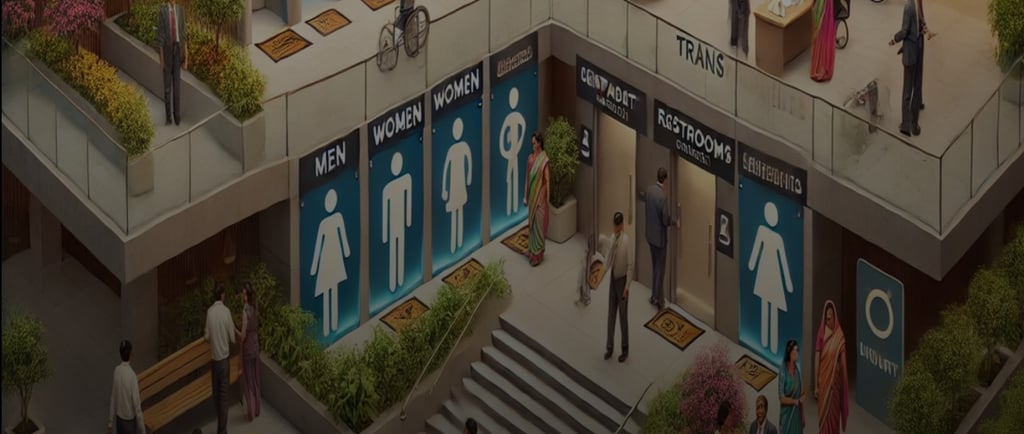Supreme Court's Landmark Judgment on Sanitation Facilities in Indian Courts
On January 15, 2025, the Supreme Court of India delivered a historic judgment in Writ Petition (C) No. 538 of 2023, filed by advocate Rajeev Kalita as a Public Interest Litigation under Article 32 of the Constitution. The petition addressed the dire state of sanitation facilities in Indian courts and sought a directive to ensure adequate toilet amenities for all genders, including persons with disabilities and transgender individuals.
1/18/20252 min read


Key Highlights of the Judgment:
Sanitation as a Fundamental Right: The court reaffirmed that sanitation facilities are an essential aspect of the right to life and dignity under Article 21 of the Constitution. Basic amenities such as toilets must be accessible, functional, and hygienic for all, including litigants, advocates, and court staff.
Directive for Comprehensive Infrastructure: The Court directed all High Courts and State Governments to:
Construct and maintain separate toilets for men, women, transgender persons, and persons with disabilities.
Ensure adequate facilities in court complexes, including clean water, sanitary napkin dispensers, handwashing amenities, and functional plumbing.
Committee Formation and Action Plan: A committee is to be established in each High Court, chaired by a judge nominated by the Chief Justice. This committee will:
Survey existing facilities and identify infrastructure gaps.
Recommend construction of new facilities or retrofitting existing ones to meet accessibility and hygiene standards.
Oversee the implementation of maintenance protocols and fund allocation.
Inclusivity and Accessibility:
The judgment emphasized providing gender-neutral restrooms and facilities for differently-abled individuals.
Special provisions such as tactile pathways for the visually impaired, ramps for wheelchair users, and child-friendly facilities in family courts were mandated.
Maintenance and Accountability: The Supreme Court recommended outsourcing maintenance to professional agencies to ensure cleanliness and functionality. It also directed periodic inspections, complaint mechanisms, and transparent fund allocation to sustain the quality of these facilities.
Global and National Context: The judgment referenced international standards and constitutional mandates, highlighting sanitation as a global human right. It cited examples from countries like Singapore, Australia, and Japan, where sanitation infrastructure and maintenance are prioritized.
Observations by the Court:
The Court noted deplorable conditions in many courts, particularly in district and rural areas, where facilities are either non-existent or poorly maintained. Issues such as broken plumbing, inadequate cleaning, and lack of privacy for women and transgender persons were highlighted. The Court expressed concern over the absence of child-friendly amenities in family courts and emphasized the need for breastfeeding stations and diaper-changing platforms.
Key Directions:
Construct sufficient toilets in all court premises for all genders and abilities.
Install temporary facilities like mobile toilets during construction.
Maintain architectural integrity while upgrading facilities in heritage court buildings.
Ensure budgetary provisions for construction and maintenance.
Report compliance within four months.
Conclusion:
The judgment marks a significant step toward improving public health and dignity in court premises. It underscores the judiciary’s commitment to addressing systemic inadequacies and ensuring equitable access to basic amenities for all stakeholders in the justice system.
This landmark decision sets a precedent for prioritizing sanitation infrastructure across public spaces in India. The next compliance report is due in four months, reflecting the urgency and seriousness of the issue.
